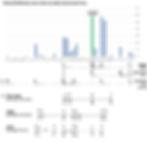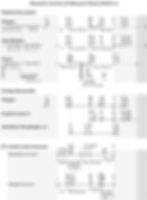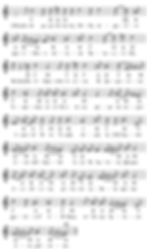Unlocking the Riddles of Classical Greek Melodies I and II
- Tosca Lynch
- Aug 16, 2022
- 2 min read
Dorian, Phrygian, Lydian... most people are familiar with these labels, and some know that they indicated different musical attunements and scales used in ancient Greece and Rome.
But what did they sound like in Classical Greece?
In a nutshell, this is the question that is addressed in two papers of mine that have just been published—Unlocking the Riddles of Classical Greek Melodies I and II, Greek and Roman Musical Studies 10.2—which are dedicated to the memory of Andrew Barker.

Bringing together evidence preserved by Aristoxenus, Aristides Quintilianus, Ptolemy, Porphyry and the Greek musical handbooks in a unified framework, this article and its sequels show how the reconstruction of the Classical modulation system offered in Lynch 2018 is confirmed by the melodies recorded in the Greek musical documents. These articles focus on the Classical/Hellenistic harmonic system and its use in key musical documents, whereas their Imperial counterparts will be discussed in forthcoming papers.
Taken jointly, these articles offer the first comprehensive account of the use of notation tónoi in the ancient Greek musical documents that is fully consistent with the extant technical evidence on Greek harmonic theory and with literary testimonies about the harmonic innovations introduced by the New Musicians.
Here is a small selection of the figures printed in Part 1, which illustrate the evidence offered by the Classical/Hellenistic musical documents and their theoretical counterparts. These figures are based upon a newly developed database (dDAGM) that collects all the musical notes attested in the standard edition of the Greek musical fragments (DAGM), comprising over 3,500 notes.





Part 2 offers new modern transcriptions of the key musical documents, including tragic melodies and Athenaeus' Paean, as well as diagrams representing the harmonic structure of these pieces and their relationship to ancient notation keys.

Thanks to these diagrams, it is possible to follow in detail the harmonic modulations of that occur in different sections of Athenaeus' Paean.

The new modern transcriptions of these documents are set a fourth lower than the standard edition, DAGM, and therefore fall in a register that is comfortable for most voices. They also indicate the chromatic 'bending' (kampḗ) of g to f# that was typical of the New Music and include microtonal variations based on the Classical counterparts of Ptolemy's harmogaí. These microtonal variations shed light on the corresponding harmoníai preserved by Aristides Quintilianus, and also explain otherwise puzzling aspects of the notation used in selected Ashmolean Papyri and Section 2 of the Paean.

More detailed summaries will follow in due course. In the meantime, you can find the full preprints online (Lynch 2020a and 2020b)!
